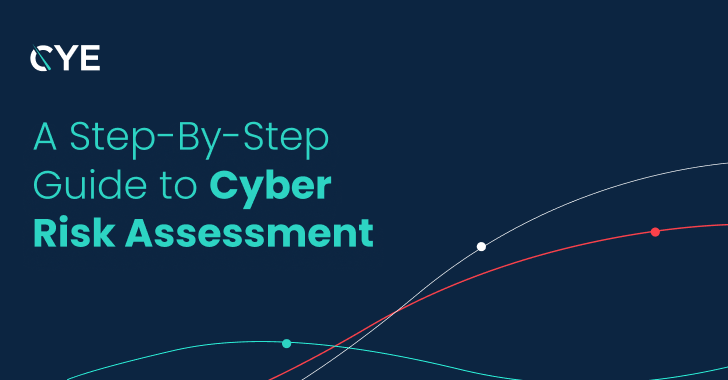[eBook] A Step-by-Step Guide to Cyber Risk Assessment
In today’s perilous cyber risk landscape, CISOs and CIOs must defend their organizations against relentless cyber threats, including ransomware, phishing, attacks on infrastructure, supply chain breaches, malicious insiders, and much more. Yet at the same time, security leaders are also under tremendous pressure to reduce costs and invest wisely.
One of the most effective ways for CISOs and CIOs to make the best use of their limited resources to protect their organizations is by conducting a cyber risk assessment. A comprehensive cyber risk assessment can help:
- Identify vulnerabilities and threats
- Prioritize security investments
- Assess cybersecurity maturity
- Communicate cyber risk to executives
- Provide the basis for cyber risk quantification
A new guide by cybersecurity optimization provider CYE (download here) explains how this can be accomplished. The guide outlines several approaches to cyber risk assessments and describes the necessary steps that can yield solid insights and recommendations for security leaders.
Conducting an effective cyber risk assessment#
There are various approaches to conducting a cyber risk assessment—each with its own pros and cons. All, however, involve understanding an organization’s security posture and compliance requirements, collecting data on threats, vulnerabilities, and assets, modeling potential attacks, and prioritizing mitigation actions.
According to the guide, an effective cyber risk assessment includes these five steps:
- Understand the organization’s security posture and compliance requirements
- Identify threats
- Identify vulnerabilities and map attack routes
- Model the consequences of attacks
- Prioritize mitigation options
A cyber risk assessment also creates the basis for cyber risk quantification, which puts a monetary value on the potential cost of cyber threats versus the cost of remediation. CRQ can help security experts pinpoint which vulnerabilities in the organization’s threat landscape pose the greatest threat and prioritize their remediation. It also helps CISOs communicate the cost of cyber risk to management and justify security budgets.
Creating a cybersecurity roadmap#
Conducting a cyber risk assessment is only the first step. The insights and recommendations that are yielded from the assessment can set the stage for creating a roadmap for how the organization’s cyber posture will be strengthened in stages. Then the team can track, measure, and quantify cyber resilience over time. The assessment should also be revisited periodically to address any emerging threats, changes to the business, and changes to the organization’s technologies, IT architecture, and security controls.
To effectively assess, quantify, and mitigate cyber risk, organizations should be sure to have the right tools and platforms in place, as well as dedicated professional guidance and advice provided by established cybersecurity experts.
Want to learn more about how to strengthen your security posture and optimize security investments by assessing and prioritizing cyber risk? Download the guide here.
A considerable amount of time and effort goes into maintaining this website, creating backend automation and creating new features and content for you to make actionable intelligence decisions. Everyone that supports the site helps enable new functionality.
If you like the site, please support us on “Patreon” or “Buy Me A Coffee” using the buttons below
![[eBook] A Step-by-Step Guide to Cyber Risk Assessment 1 Buy Me A Coffee](https://www.redpacketsecurity.com/wp-content/uploads/2022/10/buymeacoffee.png)
![[eBook] A Step-by-Step Guide to Cyber Risk Assessment 2 Patreon](https://www.redpacketsecurity.com/wp-content/uploads/2021/01/Digital-Patreon-Wordmark_FieryCoralv2-1024x209.png)
![[eBook] A Step-by-Step Guide to Cyber Risk Assessment 2 Patreon](https://www.redpacketsecurity.com/wp-content/uploads/2021/01/Digital-Patreon-Wordmark_FieryCoralv2-1024x209.png)
To keep up to date follow us on the below channels.


![[eBook] A Step-by-Step Guide to Cyber Risk Assessment 3 join](https://www.redpacketsecurity.com/wp-content/uploads/2022/06/join.png)
![[eBook] A Step-by-Step Guide to Cyber Risk Assessment 4 discord](https://www.redpacketsecurity.com/wp-content/uploads/2022/06/discord.png)
![[eBook] A Step-by-Step Guide to Cyber Risk Assessment 5 reddit](https://www.redpacketsecurity.com/wp-content/uploads/2022/06/reddit-2000x690.png)
![[eBook] A Step-by-Step Guide to Cyber Risk Assessment 6 linkedin](https://www.redpacketsecurity.com/wp-content/uploads/2023/03/linkedin.png)
